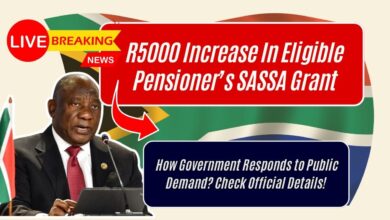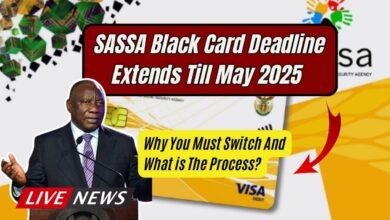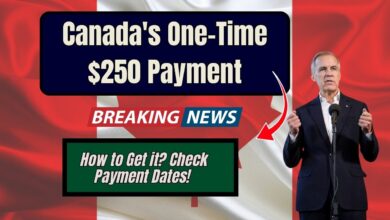Retirees Could Save More on Taxes by Withdrawing RRSP Funds Early – Check Why!
Retirees Could Save More on Taxes: Many Canadians work hard their whole lives, contributing faithfully to their Registered Retirement Savings Plan (RRSP). But what many don’t realize is this: waiting until age 71 to withdraw from your RRSP may not always be the smartest tax move. In fact, withdrawing funds earlier—before it’s mandatory—can lead to substantial tax savings when done strategically.
Whether you’re already retired or planning ahead, this guide will walk you through why early RRSP withdrawals can be a savvy financial decision, how to do it right, and what to watch out for.

Retirees Could Save More on Taxes
| Feature | Details |
|---|---|
| Optimal Withdrawal Age | Ages 60–71 during low-income years |
| OAS Clawback Threshold | $86,912 (2023 threshold) source |
| Estate Tax Exposure | RRSP becomes fully taxable income upon death |
| Tax-Saving Strategies | RRSP Meltdown, TFSA rollover, income splitting |
| Main Risks | Withholding tax, loss of contribution room, reduced compounding |
| Government Resources | RRSP Rules – Government of Canada |
Withdrawing RRSP funds early isn’t about spending recklessly—it’s about managing your tax exposure wisely. If done with care, early RRSP withdrawals can:
- Help you pay less tax
- Avoid OAS clawbacks
- Minimize estate taxes
- Increase your flexibility in retirement
Why Early RRSP Withdrawals Can Save You Money
What’s the Standard Rule?
By default, Canadians must convert their RRSP into a Registered Retirement Income Fund (RRIF) by the end of the year they turn 71. From then on, annual withdrawals become mandatory—and taxable. For many, this comes just as they begin receiving other retirement income, such as Canada Pension Plan (CPP) and Old Age Security (OAS). The result? You may land in a higher tax bracket, increasing your overall tax bill and potentially triggering OAS clawbacks. Let’s explore how to avoid this trap.
Step-by-Step: How to Make Early RRSP Withdrawals Work for You
1. Withdraw in Your Lower-Income Years
After retirement and before government pensions kick in (usually around age 65), many people experience a temporary dip in income. This is the golden window for early RRSP withdrawals.
Example:
Emma retires at 60 with no workplace pension. She lives off savings and part-time work, earning $20,000 a year. She withdraws $25,000 annually from her RRSP, taxed at a low marginal rate. In contrast, waiting until 71 might push her into a 30–40% tax bracket.
Tip: Use the CRA’s tax calculator to estimate your tax bracket by year.
2. Minimize Old Age Security (OAS) Clawbacks
OAS begins to claw back when your net income exceeds $86,912 (2023). Each extra dollar reduces your OAS by 15 cents. By gradually drawing down RRSPs earlier in life, you keep your future income under this limit, preserving full OAS benefits.
3. Reduce Estate Tax Surprises
If you pass away with funds still in your RRSP or RRIF, the remaining balance is treated as fully taxable income in your final tax return—unless rolled over to a spouse.
Example:
A $500,000 RRSP balance at death could trigger a tax bill of $200,000 or more for your estate. Early withdrawals reduce this liability and allow for more tax-friendly transfers to heirs.
4. Use the Pension Income Tax Credit
After age 65, the first $2,000 of eligible pension income (like RRIF withdrawals) qualifies for a non-refundable tax credit. Even a small withdrawal can save you hundreds in taxes annually.
5. Split Income With a Spouse
After age 65, you can split eligible pension income with your lower-income spouse to reduce your combined tax bill.
Example:
If you earn $70,000 and your spouse earns $30,000, you can shift up to 50% of your RRIF income to your spouse, possibly saving thousands each year.
What to Watch Out For
Withholding Tax
Withdrawals from an RRSP are subject to immediate withholding tax:
- 10% for up to $5,000
- 20% for $5,001–$15,000
- 30% for over $15,000
(except in Quebec; rates vary)
Note: This is not your final tax bill—you may get a refund or owe more at tax time.
Lost Contribution Room
Once you withdraw from an RRSP, that room is gone forever. You can’t recontribute the amount unless it’s a Home Buyers’ Plan or Lifelong Learning Plan withdrawal.
Reduced Compounding Power
The longer funds stay inside an RRSP, the longer they grow tax-free. Early withdrawals reduce the base for compounding. Consider reinvesting in a Tax-Free Savings Account (TFSA) to continue tax-sheltered growth.
Smart Strategy: The RRSP Meltdown
This is a classic technique used by savvy retirees and planners.
How it Works:
- Withdraw RRSP funds during low-income years (typically ages 60–65).
- Use the after-tax proceeds to invest in a TFSA or non-registered account.
- Smooth out your income over time to avoid tax spikes.
Bonus: If you have capital losses or deductions (e.g., medical expenses), you can time your withdrawals to offset the tax hit.
Parents Alert: $7,787 Canada Child Benefit Hitting Accounts Soon – Are You on the List?
$840 Benefit Ahead As Canada’s Tax Rate Cut Becomes Effective July 2025: Check Details!
Canada Child Benefit Payment Scheduled For July 18: Check Eligibility Criteria and Payment Details!
FAQs on Retirees Could Save More on Taxes
Q: Isn’t it better to let my RRSP grow as long as possible?
Not always. Growth is tax-sheltered, but large RRSP balances can create tax headaches later, especially with OAS clawbacks and estate taxes.
Q: Can I re-contribute after making an early withdrawal?
No. Unlike a TFSA, RRSP withdrawals are permanent and reduce your available contribution room.
Q: What if I need the money early for emergencies?
You can withdraw anytime, but you’ll face withholding tax and lose that contribution room. Alternatives like a TFSA or line of credit may be better.
Q: What happens if I move abroad?
RRSPs are still taxable under Canadian rules. Depending on your new country, you may also face double taxation unless a tax treaty applies. Consult a cross-border advisor.







